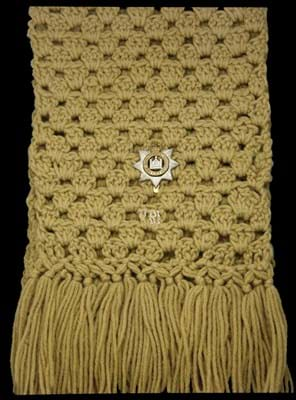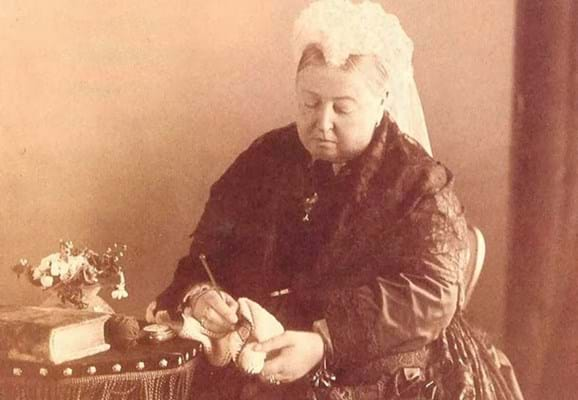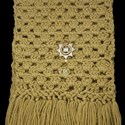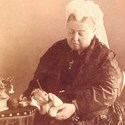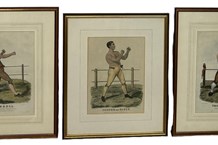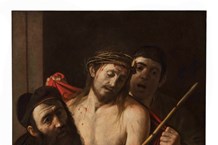While it is well known that she sent her troops tins of chocolate boxes for Christmas in the second Boer War (1899-1902), the eight scarves she personally crocheted to send to individual soldiers will come as news to most.
One of these extremely rare items is on offer at London saleroom Spink & Son on July 26 together with the medal group of the original recipient and supporting documentation, estimated in one lot at £8000-12,000.
The crocheted scarves worked in the last months of Victoria’s life (she died in 1901) “wonderfully demonstrate, as nothing else, the affection that she retained for the ordinary soldiers of her British and imperial soldiers”, says the saleroom.
Her feeling for her sailors and soldiers was deep-rooted. Not only did she take a strong interest in the first Victoria Crosses created for the Crimean War (1854-56), but she was the only child of a soldier-prince, Edward Duke of Kent, and many relatives had military connections, such as her cousin George, 2nd Duke of Cumberland, commander-in-chief of the British Army 1856-95.
Show of affection
A Spink spokesman adds: “The eight woollen scarves she crocheted in her closing days, her eyesight weakening and her fingers fumbling with the crochet-hook, are the last demonstration of her affection for her soldiers – hard-pressed but stubbornly gallant as always – during the last year of her reign.”
She specified their distribution to be four to British soldiers and four to colonial soldiers, representing “her appreciation of her soldiers’ efforts, no matter what their origin”.
Crucially, the recipients were to selected by ballot among the units themselves, the soldiers choosing the most deserving among them.
Career soldier
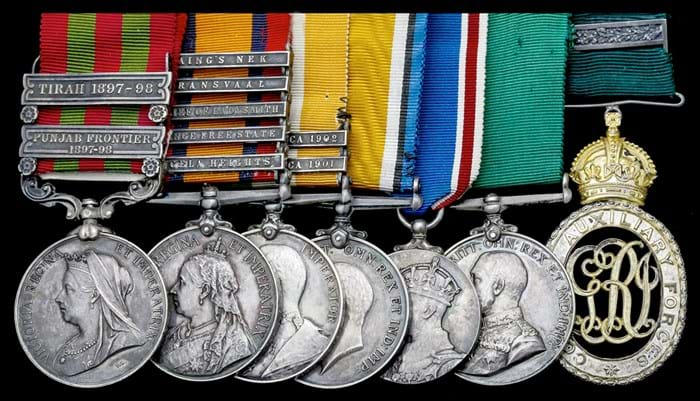
The medal group awarded to Lieutenant-Colonel TW Colclough, who as a British Army sergeant in the Second Boer war was voted by his fellow soldiers as a deserving recipient of one of eight scarves knitted by Queen Victoria.
The scarf at auction now was bestowed upon William Thomas Colcough (1872-1955). He was so determined to be a soldier he enlisted underage, at 16. He lasted 15 days before he was bought out, probably by his parents, only to reenlist the day in the Devonshire Regiment the day before his 17th birthday.
After early service in Egypt and the North-West Frontier, he was summoned back from the Army Reserve when war broke out in South Africa in 1899, to the regiment’s 2nd Battalion at the rank of sergeant.
The saleroom says: “Exact details of Colclough’s service are not available but it is clear from the clasps attached to his Queen’s South Africa Medal that he was I the thick of the action with his battalion from the end of 1899 for the remainder of the unit’s war.
“That he earned the respect of his comrades is beyond doubt since it was they who voted, almost unanimously, that he was the one NCO in the battalion most deserving of the Queen Victoria’s Scarf allocated to 2nd Battalion, The Devonshire Regiment.”
Eight NCOs and men had been considered for this one scarf with the final decision confirmed as a Battalion Order issued on August 24, 1900.
After the war, Colclough emigrated to Canada and served in the First World War with Canadian forces, although not in action. His military career continued back in Canada and he was a lieutenant-colonel by the time he retired.
The scarf remained in his family and was consigned to Spink by a direct descendant.
Personal touch
Of the four scarves personally crocheted by Victoria for colonial soldiers, three of these are in the war museums of Australia, Canada and New Zealand and the location of the last one is unknown.
Four others – including Colclough’s – went to soldiers of the 2nd Brigade, 1st Division, British Army. It is not known exactly why that brigade was chosen, but possibly down to the fact that in Queen Victoria’s opinion the regiments which it comprised had particularly distinguished themselves during the operations of the time in South Africa - when the rest of the war was not going so smoothly for the imperial troops.
Two of these scarves may have sadly been destroyed in the fire at the Surrey Infantry Museum at Clandon Park in April 2015 and the location of another one is unknown – leaving the Spink example as the only one known to survive in private hands.
The scarf itself is in light khaki Berlin wool, crocheted in a variant of ‘Ball Pattern’. It is about 8.5in (21cm) wide and 5ft 4in (1.62m) long, including 4in of woollen fringe at each end. A ‘ball’ at one end is embroidered in white silk with the imperial cypher VRI. Above this is an Other Rank’s peaked forage cap badge of the Devonshire regiment of post-1902 date, attached by the recipient’s son some 50 years ago.


